Optimizing your grow room conditions

Perfecting and optimizing your grow room conditions
It’s the goal of all home growers; perfecting and optimizing your grow room conditions to grow the best home grown cannabis they possibly can. The process requires an understanding of the indoor grow cycle, as well as nutrition, plant growth, disease, grow lights and gadgets.
Autoflower seeds or feminized seeds?
Your first question is to decide whether you will grow from autoflower seeds or feminized seeds (photoperiod). Quality from both seed types is excellent, you can choose indica dominant, sativa dominant or hybrid genetics from autoflowering or feminized seed. This cannabis seed germination guide is useful.
Growing autoflower seeds indoors
Dutch Passion recommend growing autoflower seeds under 20 hours of daily indoor light followed by 4 hours of darkness (known as a ’20/4 light schedule’). It’s possible to grow autoflower seeds under 24 hour light, but some growers feel this makes nutrient deficiencies more difficult to control.
The cannabis plant grows leaves, roots and branches but doesn’t usually start to bloom until 3-4 weeks have passed since germination. It isn’t necessary to change the light schedule to induce bloom, the genetics force the plant to bloom automatically, which is where the ‘auto’ name comes from. The plant produces most of the buds and resin during weeks 6-10.
Often the plants are harvested around 75 days after germination. Some phenotypes can take an extra week or two and yield extra heavily as a result of the additional time. Many growers feel that autoflower seeds are the simplest and easiest way to grow your own cannabis, especially for less experienced home growers.

Feminized seeds growing cycle
Traditional photoperiod feminized seeds are typically grown under a light schedule of 18/6 or 24/0 light for around 4-8 weeks, this is known as vegetive growth. The plant grows roots, leaves and branches but no buds until the light schedule is switched to 12/12.
During 12/12 lighting the cannabis plant grows buds and produces resin from the trichome glands. The resin contains THC, CBD and other cannabinoids, according to the genetics and variety.
Choosing the best cannabis seeds
Most growers do research before choosing a particular variety. They may prefer recommended varieties from friends, they may research using online growers forums, or they may have personal experience of a particular seed company.
Some growers prefer proven varieties which have won cannabis cups. Some medical growers prefer to grow CBD rich varieties. Often growers like to try new varieties, swapping and changing from indica to sativa to hybrid. Choose a seed company you trust and see if you can find good reviews.
Dutch Passion have been in business since 1987 and invented feminized seeds in the 1990’s, they have worked hard to gain a reputation for consistently high quality cannabis genetics.
Easy ways to grow cannabis indoors
Soil and coco fibre
Individual grower preference plays a huge part in deciding exactly how to grow cannabis indoors. Many growers find that growing in a pre-prepared soil mix from the local grow shop is the easiest way to grow.
Other growers feel that coco fibre offers faster growth and bigger harvests and is only marginally more complex than growing in soil. Whether you are growing in coco or soil, air pots are very popular with cannabis growers.
Air pots have curved interior surfaces which prevents roots spiralling around the edges and bottom, and the numerous air holes allow great root oxygenation levels.

Hydroponics: Risk vs reward
Many more experienced growers enjoy the challenge of growing in hydroponic (soil-free) systems such as DWC (deep water culture) and NFT (nutrient film technique). These systems offer the fastest growth and biggest results.
But hydroponics also represents the highest degree of technical complexity. You will need to understand nutrients well, and you will know how to use (and calibrate) EC and pH meters. EC meters measure electrical conductivity, which is an indication of the amount of mineral ions (nutrients) in solution. pH meters measure the acidity/alkalinity of a liquid, many coco fibre growers like to grow at a pH of around 5.8.
Tap water varies in pH from city to city, its crucial to keep pH at the right levels. And the most experienced growers are able to keep the plant in the nutrient ‘sweet spot’, gradually increasing nutrient concentrations through the grow without over-feeding or under-feeding.
Nutrients
Growing in a large 50 litre airpot of soil may mean that you could grow an autoflower plant without adding any extra nutrients. Of course, having a good knowledge of nutrients is essential for optimizing your grow room conditions.
Many growers stick to one grow method and one nutrient brand. Other growers attempt increasingly more challenging grow techniques as they gain experience. If you are growing in a hydroponic system you will need to use your pH and EC meters from the first week.
If you are growing in a 50 litre container of soil you may never need to use a pH or EC meter. Choose a grow style that suits your experience level. There is a confusing choice of nutrient companies and nutrient products.
Try to avoid over-complicating nutrient selection until you are experienced. Keeping things simple is great advice, and a helpful local hydro store is a good source of advice.

The best grow lights for cannabis
LED is the best choice for cannabis growing, many professional legal growers in the USA insist on LED to produce the highest quality buds which sell for the highest price. LED offers the most effective light spectrum, low levels of heat (less heat stress means higher THC levels in the buds), adjustable spectrum and the strongest harvest.
LED is expensive and tends to be the choice of the connoisseur home grower. HPS is the cheapest and most popular grow light for cannabis. Midway between HPS and LED in terms of quality and cost is ceramic metal halide.
However, ceramic metal halide doesn’t have adjustable spectrum control like some of the best LED grow lights such as the SolarSystem 550 and it isn’t widely used by the legal USA growers who prefer LED for premium quality buds.
Dutch Passion has a sister company, LED By Passion, who specialise in buying LED lights in bulk wholesale quantities direct from the factories of the best grow light manufacturers such as California Lightworks, Fluence, SANlight and others.
Maximizing THC levels in home grown cannabis
Dutch Passion have seen clones of the same variety produce 16% THC when grown under HPS light and 22% THC under LED. At the same time we noticed that minor cannabinoids were all boosted under the LED grow light conditions.
The clones were grown in the same grow medium, with the same nutrients, in the same grow location by the same grower. The only difference was that one tent has HPS and the other LED. So the grow light has a has a major effect on the final result, even with identical genetics.
Avoiding large temperature fluctuations and minimizing plant stress is key to plant health and cannabis quality. The experience of the grower is a major factor, as is the environment, the genetics and nutrients.
The best growers often learn from other growers, and will read books and online information sources to fine-tune their own knowledge.
UVA and UVB for extra THC
In the years since the USA cannabis market went into legal mass production much has been learned about getting the very best from each harvest. In a regulated system, a batch of cannabis with 25% THC will attract a higher price than a batch with 15% THC.
The final THC content (and other cannabinoids) can be improved by switching from HPS to LED growlights. And the cannabinoids can be further improved by exposing plants to UVA and UVB light during the last 2-3 weeks for 2-3 hours per day. THC can be increased from 15% to nearer 19% with additional UVA and UVB, and some growers supplement their grow rooms with UV lights made for reptiles or with purpose built cannabis UVA/UVB grow lights such as the SolarSystem UVB.
Note that the most cost efficient way to produce UVA & UVB light is with purpose built fluorescent tubes. LED still can’t compete with Fluorescent for UV production. Any grower keen to take their quality up a level should think about upgrading to LED and also adding a UV light for optimizing their grow room conditions
![]()
Pests from indoor growing
The best way to deal with pests is to avoid them. Clean and wipe down your grow room before each grow and ensure your plant containers (or grow system) is thoroughly cleaned. Don’t be tempted to take your plants out of the tent and into the sun for a few hours on a warm day – you will introduce greenfly or similar pests.
If you do notice any unusual flies, insects or leaf damage on your plants take some pictures and do some searches. Many soil and coco fibre growers use sticky fly paper in their tent to trap flies and fungus gnats. Most indoor pests are easily dealt with if you know what you are dealing with, your local grow shop (or online grow shop) should have the necessary remedy.
If you want to grow the best weed possible from your grow room, then ensuring a pest-free environment is critical. One of the advantages for indoor cannabis growers over outdoor cannabis growers is the pest-free environment which can be provided for the plants.
Optimizing your grow room conditions and your harvest
The challenge for any home grower is continuous improvement; to take the quality of their harvest up a level. For some growers there are no short cuts, you just need to gain experience and find a growing style which suits you.That may be your current grow method, or it may be a future grow method which you are thinking of mastering.
Examine your own grow techniques and equipment and ask if there are any areas that could be improved. Many growers will buy a book or two to help them learn, or they will conduct their own internet research.
Upgrading your grow room equipment is often a costly process but it is worth the cash especially if you are investing in quality LED – you will benefit from lower ongoing electricity costs, reduced heat stress and better quality.
For many growers, the switch from HPS to a quality LED grow light is the biggest improvement that they can make.






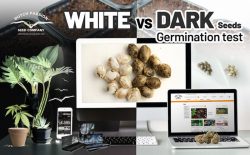



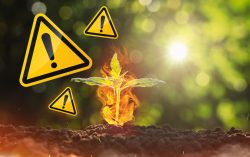

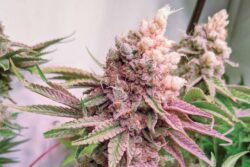

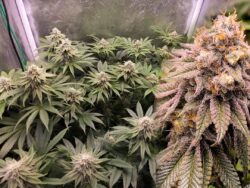
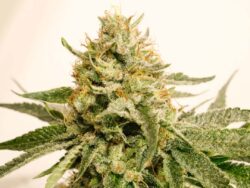
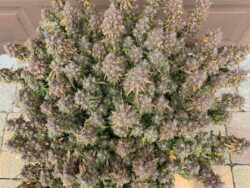
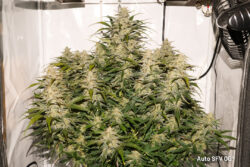

5 Comments. Leave new
How many watts should have led lamps for 5-6 seeds? I need an indication because i’m a principiant..thanks
How big is your growing space?
For 5 to 6 plants I would advice to start with an LED of around 800 watts.
Greetings,
Joe
Dutch Passion
My growing area is about 60x40x120h cm…
Thanks
I read, but probably it’s wrong, that need about 300w (led) for m*2
Any LED over 720watts is over kill. All the best LEDS that will cover a 4x4ft area ,and I say from experience, use about 600 to 700watts. I am currently using Fluence SpydrX Plus and Growers Choice ROI720. From 10 XXL Hoods w 1000watt HPS bulbs getting 12 to 15lbs a harvest, to 8 LED @ 680watt pulling 16 to 22lbs a Harvest. All while using less AC while sucking less KW/H! Best $$ I ever spent was on Full Spectrum LEDS…oh and some 4200k 315CMH for veg as well as some 3100k CMH to supplement the LEDS.